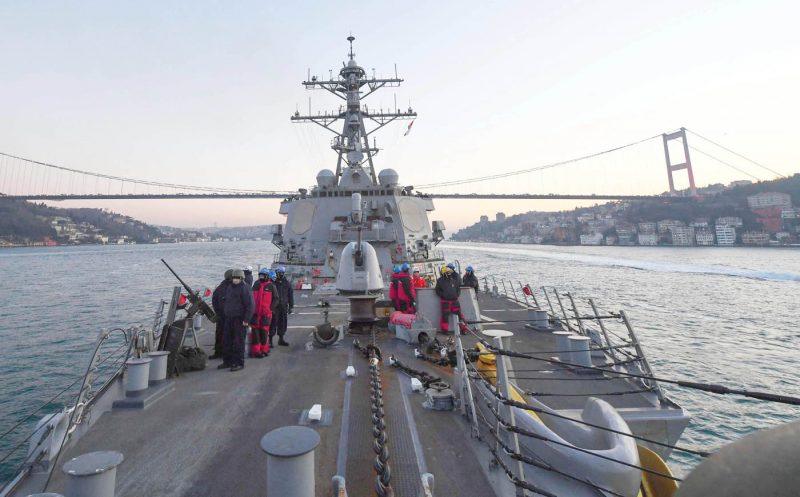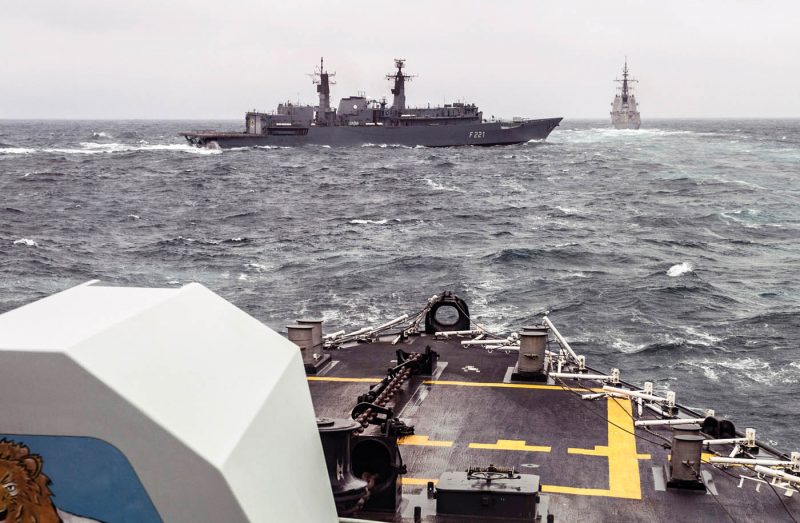
The so-called Great Game was played out across central Asia in the 19th Century as the British strove by all-means–other-than-war to prevent the southwards march of Russian imperialism.
It was considered a threat to Britain’s own empire, which was sprawled across the same part of the world, primarily to India, but also London’s interests in Afghanistan and Iran. At various moments there were fears the, sometimes deadly, rivalry played out in the shadows by agents of both Russia and Britain would lead to a global war.
Today, another Great Game is in play, with Western nations confronted by a new southwards expansion of Russian interest. Having already secured its near-southern (Black Sea) flank by annexing Crimea and destabilising Ukraine, Russia has moved further south and west. It has used naval, air and land forces to preserve its interests in Syria, while courting Turkey and Egypt (though the former remains a NATO member and the latter still has close defence ties with the West).
Russia has possibly supplied Iran with Anti-Shipping Missile (ASM) systems that have enabled older weapons to be passed on to Houthi rebels. They have been used to attack American and Arab warships patrolling the Bab-el-Mandeb Strait.
Meanwhile, on the way home from a combat deployment to the eastern Mediterranean the Russian carrier Kuznetsov called at Libya to welcome aboard a warlord whom the Kremlin hopes it can use to put a stake in the ground for influence in the chaotic North African state. This would secure a refuelling stop for future naval task group deployments.
Most shocking of all, however, was the revelation in October that Western intelligence agencies had uncovered an allegedly Russian-sponsored plot to assassinate the newly elected leader of Montenegro just as the tiny Adriatic nation is seeking to join NATO.
Further details of this proposed coup emerged when an investigation by the UK-based Sunday Telegraph newspaper claimed it was even directed by Russian intelligence officers at the behest of Moscow. Once again, the prize was said to be access to a hub for maritime operations, in this case Bar, the primary base of Montenegro’s small naval forces.
Should Russia succeed in preventing NATO membership for Montenegro (not due to be approved until the summer) then Bar could be a thorn in the side of the Western defence alliance, as well as a launchpad for Russian naval patrols across the Mediterranean. Russia needs to secure access to the entire span of the Mediterranean as the Black Sea Fleet is constricted by international law in how it can operate certain units in the Med (such as submarines) once they are based at Sevastopol or Novorossiysk. They are banned from taking part in Med-based combat operations, while Russia is barred from basing aircraft carriers in the Black Sea.

Therefore, major units such as the Kuznetsov, or new diesel-electric submarines armed with land-attack cruise missiles, must be drawn from the far-off Northern Fleet, which is based in the Kola Peninsula. To reach the crucial Mediterranean theatre of operations they require replenishment stops, especially if they are to operate for any length of time in the Med.
While Russia, quite rightly, claims that it can operate warships and aircraft wherever it likes within international waters and airspace, it takes a very aggressive view of NATO daring to deploy its warships to operate in the Black Sea, or anywhere else close to its territory. Both in the Black Sea and the Baltic the Russian naval air arm has sent out its strike jets to harass American guided-missile destroyers, the latest such incident taking place at the beginning of 2017.
Two Su-24 Fencer jets and an Il-38 May surveillance aircraft flew provocatively close to the USS Porter, according to US-based sources coming less than 600ft from the ship at an altitude of only 300ft. Porter’s mission was to work with warships from other NATO nations to reassure Black Sea member states that the alliance would stand by them. This is a particularly important message at a time when President Trump has questioned the validity of NATO while Russia constantly seeks to undermine the alliance by labelling it a Cold War relic.

The headline event for NATO naval forces in the Black Sea in recent weeks was the multi-national exercise Sea Shield 2017. Aside from Porter this drew in the Spanish warship Almirante Juan de Borbon, flagship of Standing NATO Maritime Group 2 (SNMG2), the Canadian frigate HMCS St. John’s, which operated alongside eleven vessels from Romania, Bulgaria and Turkey. The only submarine involved was the Turkish diesel-electric boat TCG Dolunay, playing the role of the hunter and the hunted during ASW training. Even as non-Black Sea NATO units were making their way through the Turkish Straits to join Sea Shield, the Russians continued passing their own vessels back and forth (some on the supply run to Moscow’s forces in Syria).
Meanwhile, the leadership of NATO regards Russia post-Crimean annexation as a menace that grows every day. Following last month’s meeting of NATO defence ministers, the alliance’s Secretary General Jens Stoltenberg revealed that it is boosting its naval commitment to the Black Sea. “Our deployments are defensive and measured,” he pointed out. “We will not match Russia soldier for soldier, tank for tank, or plane for plane. Our aim is to prevent conflict, not to provoke it.”
Stoltenberg explained that NATO defence ministers have agreed “an increased NATO naval presence in the Black Sea for enhanced training, exercises and situational awareness, and a maritime coordination function for our Standing Naval Forces when operating with other Allied forces in the Black Sea region. And this shows Allies stand together, united and strong.”
The Secretary General later added that a NATO “standing naval force” is to “more frequently move into the Black Sea.” It will “conduct exercises together with all the allies and also increase our situational awareness through more naval presence.”
It seems for every move Russia makes in the new Great Game, NATO is gearing up to respond. The leadership in the Kremlin sees it as a hostile formation seeking to suffocate Russia. “At the NATO summit last July in Warsaw, Russia was declared the main threat to the alliance for the first time since 1989,” President Vladimir Putin pointed out during a meeting of the Federal Security Service Board in the Kremlin. “NATO officially proclaimed containing Russia its new mission. It is with this aim that NATO continues its expansion.”

President Putin went on: “This expansion was already underway earlier, but now they believe they have more serious reasons for doing so. They have stepped up the deployment of strategic and conventional arms beyond the national borders of the principal NATO member states. They are provoking us constantly and are trying to draw us into confrontation. We see continued attempts to interfere in our internal affairs in a bid to destabilise the social and political situation in Russia itself.” For that reason, the Kremlin is unlikely to lessen the intensity of its Great Game, whether in the shadows or overtly. It may, in fact, increase its powerplays.





Comments
Sorry, comments are closed for this item